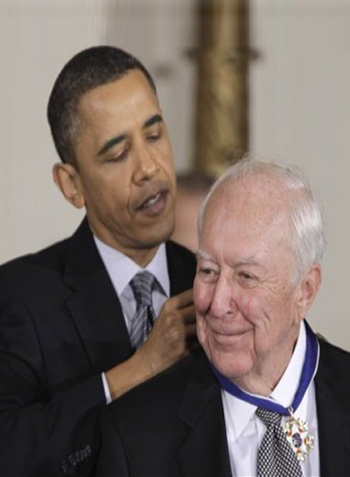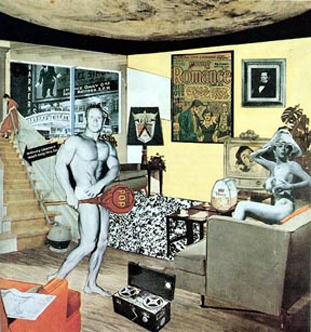The Postmodern era begins around the end of World War II, in 1945, and The Vietnam War: The Cold War, 1955 -1975. In the USA political and racial turmoil contribute to the reasons why Martin Luther King, President John F. Kennedy, and his brother Senator Robert F. Kennedy are assassinated. People learn to exchange naivety for harsh reality. Postmodern painting reflects trained artists’ responses. No longer dependent upon classical teachings, some artists begin to incorporate image-based commercial products and services. This collection of paintings illustrates the unleashing of artistic freedom.
Jasper Johns (1930) is born in Augusta, Georgia and raised in South Carolina. From the age of five, Johns knows he wants to become an artist.
His formal studies at the University of South Carolina end after three semesters. At the insistence of his art teachers he moves to New York City, in late 1948. Johns is barely established at the Parsons School of Design, when the Draft Board calls him to the army.
After Johns’ military service ends, a commercial career begins with a job at a Manhattan, department store where he creates window displays.
His first one-man exhibit in 1958 is an enormous success. The Museum of Modem Art, in New York City, purchases several of Johns’ works from that show and this painting appears on the January 1958 cover of ART News Magazine.
At the time, Jasper Johns and his friend Robert Rauschenberg are largely responsible for Pop art kicking over the traces of Abstract Expressionism. Rauschenberg is the next artist, in the Postmodern collection.

Postmodern, American Abstract Collage (1955 – 1970) Pop art originates in Britain, as the art of popular culture in the mid-fifties. Richard Hamilton critiques superficiality in the imaginary, perfect home of “Adam & Eve.” Look closely at the display of objects in their private Garden of Eden.
The figures illustrate what is shown on TV and film. The title parodies an advertising slogan. Like the biblical Adam and Eve, the figures are not totally nude. Forget the apple, this couple succumb to the “temptations” of consumerism.
Adam is a bodybuilder and Eve is a pin-up girl. "Critic Lawrence Alloway references the huge Tootsie Pop Adam is holding when he describes Target with Four Faces as “Pop Art.” The movement is named but it does not capture the spotlight on the New York scene, until the sixties.
Then “highbrow art” slips back to create an even playing field for everyday objects previously overlooked as art. View this video of a Johns’ painting being auctioned. Hear his response to the astronomical prices dealers and the moneyed-set are willing to pay.

Go on to Describe, Analyze, Interpret & Conclude. Contact me for help.
Target with Four Faces 1995. Encaustic on newspaper and cloth over canvas surmounted by four tinted plaster faces in wood box with hinged front. Overall with box open - 34 x 26 x 3 in. (85 x 67 x 8 cm.)
Encaustic is an ancient painting technique consisting of pigment mixed with hot beeswax and layers of miscellany collaged (pasted on) or embedded into the canvas. Faces are made of plaster casts, another ancient method used by Archaeologists.
Johns uses the impasto technique of laying thick paint on a surface with a brush and or a palette knife. Notice a male figure in the lower left and paper pressed down in various places. Faint words are under the face on the right. We see specific objects, but the purpose is unclear.
This image brings up the question of representation. Is it a painting of a target or is it an actual target? If you missed Magritte’s Surrealist painting, The Treachery of Images, in the Modern Collection, you may wish to go back and forth to look at it in-depth because both paintings seem to pose the same question.
Jasper Johns talks about how he creates his ‘Target Paintings’ at the San Francisco Museum of Modern Art.